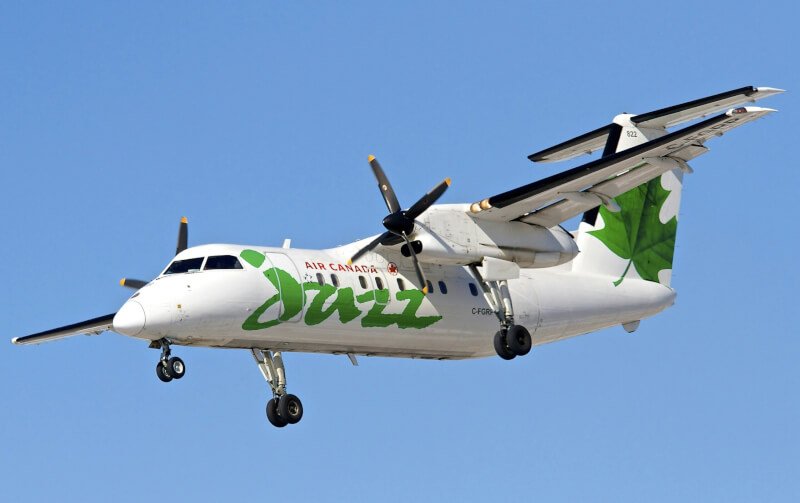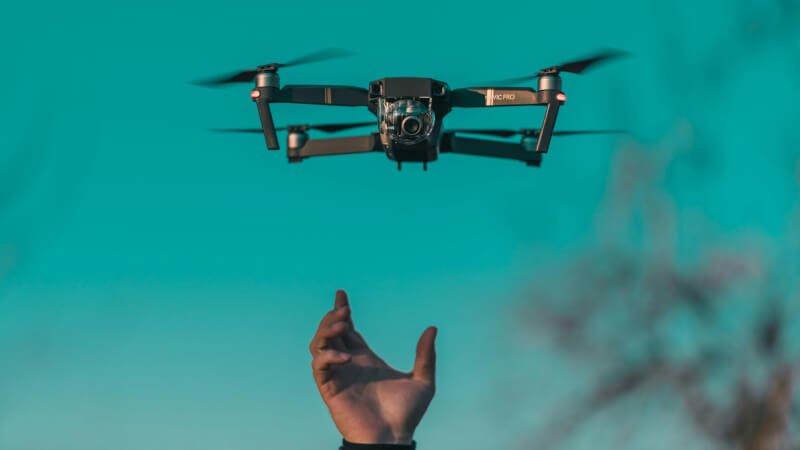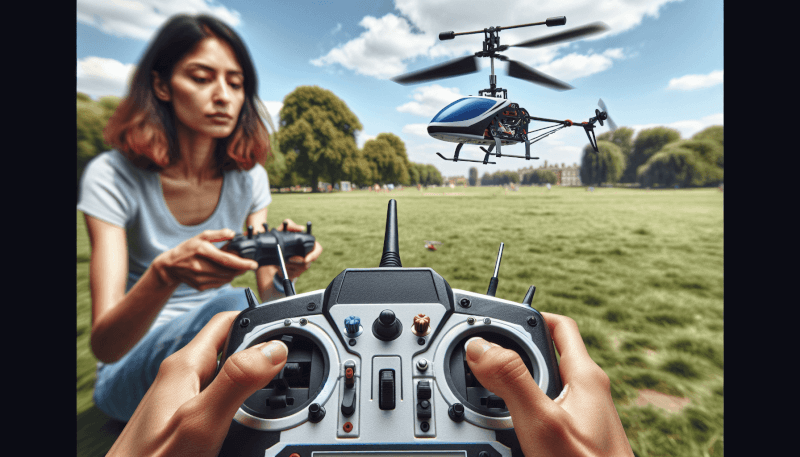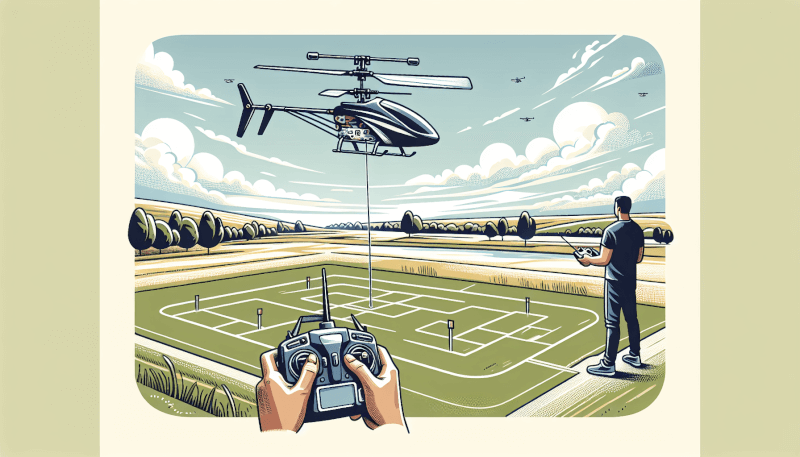Everyone who has ever watched an RC heli soar gracefully through the air has wondered just how exactly the pilots are able to pull off those impressive and precise maneuvers. Well, wonder no more! In this article, you will discover the secrets to mastering precision flying with your RC heli. From understanding the basics of control inputs to honing your hand-eye coordination, we will guide you step by step towards becoming a skilled and confident RC heli pilot. Get ready to take your flying skills to new heights!
Choosing the Right RC Heli
When it comes to choosing the right RC heli, one of the first things you need to consider is your skill level. If you’re a beginner, it’s important to start with a basic model that is easy to control and maneuver. Look for helicopters specifically designed for beginners, as they are often equipped with features like stability systems and beginner-friendly flight modes. On the other hand, if you’re an experienced pilot looking for a challenge, you can opt for a more advanced and high-performance model.
Researching different models is also crucial in finding the perfect RC heli for you. There are plenty of options available in the market, each with its own set of features and specifications. Take the time to read reviews, watch video demos, and gather information about the various models you’re interested in. Look for helicopters that suit your preferences and flying style, whether you prefer scale models, sport helicopters, or 3D performance helicopters.
Before making a final decision, take a close look at the features and specifications of the RC heli you’re considering. Some key features to consider include the size and weight of the helicopter, the number of channels it has, the type of transmitter it uses, and the type of motor and battery it utilizes. Make sure the helicopter has the necessary capabilities to match your flying goals, whether it’s stability and ease of control or high-performance aerobatics.
Basic Flying Techniques
To become a skilled RC heli pilot, mastering basic flying techniques is essential. One of the fundamental skills to develop is throttle control. Understanding how to manipulate the throttle effectively allows you to control the altitude and speed of your helicopter. Practice maintaining a steady altitude and smoothly adjusting the helicopter’s speed by gradually increasing or decreasing the throttle.
Another important aspect of flying an RC heli is mastering cyclic and collective pitch control. The cyclic control adjusts the pitch of the helicopter blades cyclically, enabling it to move forward, backward, left, and right. The collective pitch control, on the other hand, adjusts the pitch of all the blades simultaneously, affecting the altitude of the helicopter. Practice manipulating both controls to achieve smooth and precise movements.
Once you’ve gained confidence in throttle and pitch control, it’s time to move on to practicing hovering and basic maneuvers. Hovering is the act of keeping the helicopter in a stable position in midair, which requires a delicate balance of throttle, cyclic, and collective pitch inputs. Start by hovering at eye level and gradually challenge yourself by hovering at different heights and in various orientations. Once you’re comfortable with hovering, begin practicing basic maneuvers like forward flight, turns, and simple figure-eight patterns.

Enhancing Your Control Skills
To enhance your control skills and become a more proficient pilot, it’s crucial to fine-tune your controls. Spend time adjusting the sensitivity and expo settings on your transmitter to match your preferences. Experiment with different settings until you find the one that feels most comfortable and responsive to your inputs. This will allow you to have better control over your RC heli during flight.
Precision hovering is another important skill to focus on. Challenge yourself to maintain the helicopter’s position in midair with minimal drift or wobbling. Practice hovering at different heights and orientations, and strive for smooth and stable hovering. This skill is crucial for performing advanced maneuvers and maintaining complete control over your helicopter during challenging flight scenarios.
Once you have mastered precision hovering, you can move on to perfecting figure-eight and square maneuvers. These maneuvers require a combination of throttle, cyclic, and collective pitch inputs to execute smoothly. Practice flying your helicopter in precise figure-eight patterns, gradually increasing your speed and tightening the turns. Similarly, practice flying in perfect square patterns, maintaining equal sides and sharp corners. These maneuvers will improve your overall flying skills and prepare you for more complex flight maneuvers.
Navigating Complex Maneuvers
Once you have built a solid foundation of flying skills, it’s time to tackle more complex maneuvers with your RC heli. Learning inverted flying is a significant milestone for any helicopter pilot. Inverted flying involves flying your helicopter upside down, with the belly of the helicopter facing the sky. This requires a complete shift in your control inputs, as everything becomes reversed. Take the time to practice flying inverted and gradually increase your comfort level with this challenging maneuver.
Performing flips and rolls is another advanced maneuver that you can strive to master. Flips involve making your helicopter rotate forward or backward along its longitudinal axis, while rolls involve making the helicopter roll sideways along its lateral axis. These maneuvers require precise control inputs and a thorough understanding of your helicopter’s aerodynamics. Start by practicing small flips and rolls and gradually work your way up to bigger and more complex maneuvers.
To take your skills to the next level, try mastering inverted and upright funnels. Funnels involve flying your helicopter in a circular path while maintaining a constant altitude. Inverted funnels add an extra layer of complexity by performing this maneuver inverted. These maneuvers require excellent control and coordination to keep the helicopter in a smooth and predictable path. Practice gradually increasing the size and speed of your funnels to challenge your control skills and build confidence.

Improving Orientation Awareness
Developing good orientation awareness is crucial for becoming a skilled RC heli pilot. Using orientation aids can greatly assist in maintaining control and orientation of your helicopter, especially during high-speed maneuvers or when flying at a distance. Attach brightly colored decals or tape to the helicopter’s canopy to easily distinguish the front and back of the helicopter. Additionally, using different-colored rotor blades can help with orientation during flight.
Practicing nose-in and tail-in flying is another effective way to improve your orientation awareness. Nose-in flying refers to flying the helicopter with the nose pointing towards you, while tail-in flying is the opposite. These flying orientations can be challenging initially, but with practice, you’ll gain a better understanding of the helicopter’s movements and become more comfortable navigating in different orientations. Focus on smooth and controlled flying to build confidence in both nose-in and tail-in orientations.
Utilizing flight simulators is an invaluable tool for improving your orientation awareness and overall flying skills. Flight simulators allow you to practice flying and maneuvering your RC heli virtually, providing a realistic experience without the risk of crashing and damaging your actual helicopter. Spend time using flight simulators to practice different maneuvers, orientations, and flying conditions. This will help you develop muscle memory and enhance your reaction time, ultimately making you a more proficient pilot.
Managing Wind and Weather Conditions
As an RC heli pilot, it’s essential to understand the effects of wind on your helicopter’s flight. Strong winds can significantly impact the stability and control of your helicopter. Learning to read the wind and adjust your flying technique accordingly is key. When flying in windy conditions, consider increasing the collective pitch slightly to maintain altitude and stability. Additionally, avoid flying too close to obstacles or tall buildings that can create turbulent wind conditions.
Adjusting your flying technique to suit different weather conditions is also crucial. Rainy or wet conditions can affect the grip of your helicopter’s landing skids, making takeoffs and landings more challenging. On the other hand, hot and dry conditions can affect battery performance, causing reduced flight times. Consider making adjustments to your flying style and flight duration to accommodate these weather conditions.
Practicing in different weather conditions will help you become a versatile pilot. Try flying on days with varying wind strengths, different temperatures, and different levels of sunlight. This will expose you to various flying conditions and enable you to adapt your flying technique accordingly. Remember, safety should always be your top priority, so avoid flying in extreme weather conditions that may pose a risk to yourself or others.

Safety Tips for Precision Flying
When it comes to precision flying with your RC heli, safety should always be your number one concern. Choosing a suitable flying location is crucial for both the safety of yourself and others. Look for open areas with ample space and minimal obstacles. Avoid flying near active roads, power lines, or crowded areas to reduce the risk of accidents. Always keep a safe distance from people, property, and wildlife.
Performing pre-flight checks is another safety measure you should never overlook. Before taking off, inspect your helicopter for any loose or damaged parts. Ensure all screws are tight, the main rotor blades are securely fastened, and that the battery is properly connected. Additionally, check that the flight controller and receiver are functioning correctly. Regularly maintaining and inspecting your RC heli will minimize the chances of unexpected failures during flight.
Using a checklist for maneuvers is an excellent way to ensure you don’t miss any crucial steps or safety precautions. Before attempting any advanced maneuvers, take a moment to go through the checklist and confirm that your helicopter is in optimal condition. Ensure you’re in a suitable flying location, notify any bystanders, and mentally prepare for the maneuver. This will help you maintain focus and execute the maneuver safely and accurately.
Troubleshooting and Maintenance
Issues may inevitably arise when flying an RC heli, but being able to identify and fix flight issues is an essential skill for every pilot. Common flight issues include vibrations, tail rotor control problems, and power loss. If you experience any abnormal vibrations, inspect the helicopter for loose or damaged parts, such as blades, screws, or landing skids. For tail rotor control problems, check the tail rotor assembly for any binding or damage. Power loss issues can often be resolved by checking the battery connections or replacing worn-out batteries.
Regularly maintaining your RC heli is crucial for ensuring optimal performance and longevity. Clean your helicopter after every flight to remove any dirt or debris that may have accumulated. Inspect the rotor blades and landing skids for signs of wear or damage, and replace them if necessary. Additionally, check the motor and bearings for any signs of wear or excessive heat. Regular maintenance will help extend the lifespan of your RC heli and prevent unexpected failures during flight.
Replacing damaged or worn-out parts is inevitable when owning an RC heli. Keep a stock of spare parts that are prone to wear or damage, such as rotor blades, landing skids, and bearings. This way, you’ll be prepared to make necessary repairs or replacements quickly. Always ensure you’re using genuine replacement parts to maintain the performance and integrity of your helicopter. Following the manufacturer’s guidelines for part replacements will ensure safe and reliable flight.

Advanced Tricks and Techniques
Once you have become proficient in basic and intermediate flying skills, you may be ready to tackle some advanced tricks and techniques with your RC heli. Mastering autorotations is a valuable skill that allows your helicopter to descend smoothly and safely in the event of a power failure. Practice entering autorotation mode by reducing the throttle to zero and smoothly adjusting the collective pitch to descend. This skill can be challenging to master, but it is essential for the safe operation of your RC heli.
Performing inverted autos is another impressive maneuver to strive for. This involves entering autorotation mode while the helicopter is inverted. It requires precise control inputs and a deep understanding of your helicopter’s aerodynamics. Start by practicing small inverted autos and gradually increase the complexity and size of the maneuvers. Remember, safety should be your utmost priority when attempting advanced maneuvers, so only attempt them once you have the necessary skills and experience.
Trying advanced 3D flying is the pinnacle of RC heli piloting. This involves performing a wide range of complex and acrobatic maneuvers, including tic-tocs, hurricanes, and piro flips. Advanced 3D flying requires excellent coordination, timing, and precise control inputs. It is recommended to practice these maneuvers in a designated flying area away from spectators and other pilots. Always keep safety in mind and gradually progress at your own pace as you develop confidence in executing advanced 3D maneuvers.
Participating in RC Heli Competitions
If you’re looking to take your RC heli piloting to the next level, participating in RC heli competitions can be an exciting way to challenge yourself and learn from experienced pilots. Joining local flying clubs is a great way to connect with other like-minded pilots and gain access to resources and flying events. These clubs often organize competitions and provide opportunities for pilots to showcase their skills and compete against others.
Understanding competition categories is crucial before entering a competition. RC heli competitions typically have different categories based on skill levels, flying styles, and helicopter sizes. Familiarize yourself with the specific rules, requirements, and judging criteria for each category you’re interested in. This will enable you to prepare appropriately and focus on developing the skills necessary to excel in your chosen category.
Learning from experienced pilots is invaluable for honing your skills and improving your performance in competitions. Observe and interact with experienced pilots at flying clubs or competitions, and ask for their guidance and tips. Many experienced pilots are more than happy to share their knowledge and offer valuable advice. Take advantage of their experience and insights to learn new techniques, refine your flying style, and ultimately become a better RC heli pilot.
In conclusion, mastering precision flying with your RC heli requires a combination of skill, practice, and dedication. Start by choosing the right RC heli for your skill level and conducting thorough research before making a purchase. Master the basic flying techniques, enhance your control skills, and navigate complex maneuvers. Improve your orientation awareness, manage wind and weather conditions, and prioritize safety. Troubleshoot and maintain your RC heli regularly, and aim to master advanced tricks and techniques. Consider participating in RC heli competitions to push yourself further and learn from experienced pilots. With patience and perseverance, you can become a skilled and confident RC heli pilot who can perform precise and awe-inspiring maneuvers in the sky.



